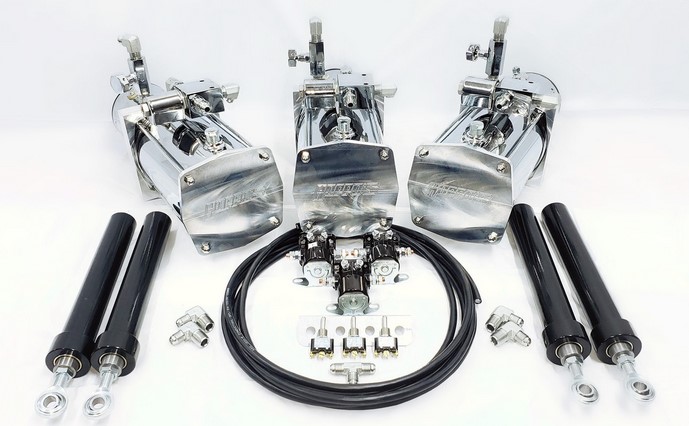

The 3-Pump Hydraulic Setup is a specialized configuration within hydraulic suspension systems, primarily used in automotive applications for creating adjustable vehicle suspension. This setup includes three hydraulic pumps that work in unison to control the vehicle’s height and tilt. Each pump is typically assigned to control a specific part of the vehicle – one for the front, one for the back, and the third one for the side-to-side motion. This system allows for precise control and manipulation of the vehicle’s suspension, enabling it to raise, lower, or tilt in any direction. The 3-Pump Hydraulic Setup is particularly popular in the lowrider car culture, where it is used to perform various tricks and stunts.
Understanding the Mechanics of a 3-Pump Hydraulic Suspension System
Hydraulic suspension systems have revolutionized the automotive industry, offering unparalleled control and flexibility in vehicle handling. Among these systems, the 3-pump hydraulic setup stands out for its unique blend of performance and versatility. This article aims to provide a comprehensive understanding of the mechanics of a 3-pump hydraulic suspension system.
At its core, a hydraulic suspension system is a type of suspension system that uses hydraulic fluid to power the movement of the vehicle’s wheels. This fluid is pressurized by a pump, which then transfers the pressure to the wheels through a series of hydraulic lines. The 3-pump hydraulic setup, as the name suggests, employs three such pumps to control the vehicle’s suspension.
The first pump, often referred to as the ‘main’ or ‘primary’ pump, is responsible for controlling the front wheels. This pump is typically the most powerful of the three, as the front wheels bear the brunt of the vehicle’s weight and are crucial for steering. The second and third pumps, on the other hand, control the rear wheels. Each rear wheel has its own dedicated pump, allowing for independent control of each wheel’s suspension. This independent control is a key feature of the 3-pump setup, enabling a range of unique maneuvers such as ‘hopping’ or ‘dancing’ where the vehicle’s rear wheels move independently of each other.
The operation of a 3-pump hydraulic suspension system is governed by a series of valves and switches. These components allow the driver to control the flow of hydraulic fluid to each wheel, thereby adjusting the vehicle’s suspension. For instance, by opening the valve to the front pump, the driver can increase the pressure to the front wheels, raising the front of the vehicle. Conversely, by closing the valve to a rear pump, the driver can decrease the pressure to that wheel, lowering the rear of the vehicle.
One of the main advantages of a 3-pump hydraulic suspension system is its versatility. With three independent pumps, the driver has a high degree of control over the vehicle’s suspension, allowing for a wide range of maneuvers. This makes the 3-pump setup particularly popular among car enthusiasts and in the lowrider community, where unique and dynamic vehicle movements are highly prized.
However, a 3-pump hydraulic suspension system is not without its challenges. The system’s complexity requires a high level of maintenance to ensure its smooth operation. Regular checks of the hydraulic fluid levels, pump operation, and valve integrity are essential to prevent system failure. Additionally, the system’s high power demands can put a strain on the vehicle’s electrical system, necessitating upgrades to the vehicle’s alternator and battery.
In conclusion, a 3-pump hydraulic suspension system offers a unique blend of performance and versatility, enabling a range of dynamic vehicle maneuvers. However, this system’s complexity and power demands require a high level of maintenance and electrical support. As such, while the 3-pump setup may not be suitable for every vehicle or driver, for those seeking unparalleled control over their vehicle’s suspension, it represents an exciting and rewarding option.A 3-Pump Hydraulic Setup in Hydraulic Suspension Systems offers enhanced control and flexibility over the vehicle’s suspension. It allows for individual manipulation of the front and rear suspensions, as well as the ability to adjust the vehicle’s height on either side. This setup is particularly beneficial for custom vehicles, enabling unique maneuvers and adjustments for optimal performance and style. However, it requires a more complex installation process and maintenance compared to simpler systems.